How To Collect Rainwater For Garden
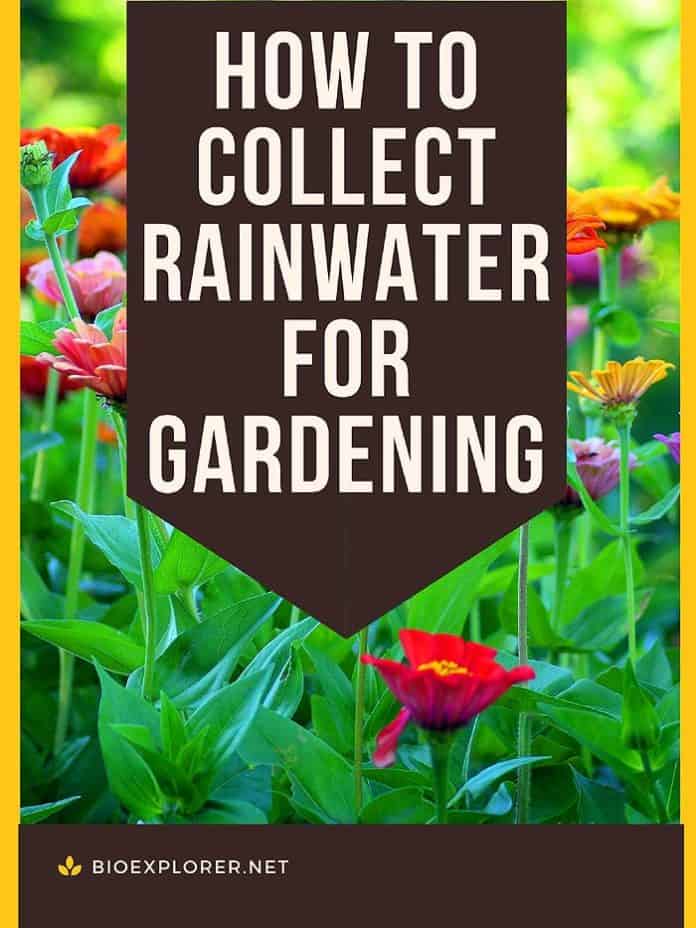
How To Collect Rainwater For Gardening? Rainwater can be an excellent natural resource that you shouldn't waste. You can use it in various ways around your home, and the best thing about it is that it is free. But to get to use rainwater, you will have to collect it properly. There are many ways to do that, and in this complex guide, we will let you in all the secrets of this process.
Collecting rainwater is relatively simple as all you need is a barrel or some buckets. Still, there are also more complex systems that we will talk about as follows.
So, keep reading to find out everything you need to know about collecting rainwater.
Table of Contents
- Is rainwater suitable for the garden?
- Is rainwater good for vegetables?
- Do plants like rainwater?
- Does rainwater have germs?
- What are the steps for harvesting rainwater for a garden?
- A) Use a rainwater barrel
- B) Place the barrel in the best spot
- C) Store your rainwater properly
- Do rainwater tanks need cleaning?
- A) Drain the tank
- B) Remove the debris
- C) Set up your tank for the next rain
- Rainwater irrigation systems for garden
- A) Set up your yard for a rainwater gardening system
- B) Add pipes to your downspouts
- How to collect rainwater without gutters?
- A) Use diverters
- B) Place a barrel or a water tank under the water jet
- Other than gardening, what are other purposes of stored rainwater?
- Best way to recycle rainwater
- Is it illegal to collect rainwater in some US states?
- What are the main problems of harvesting rainwater?
- A) Rainwater can develop a particular smell
- B) Rainwater might have a murky color
- C) You collect less water than you expect
- Differences between stormwater and rainwater
- Is rainwater soft or hard?
- Where to get large rain barrels?
Is rainwater suitable for the garden?
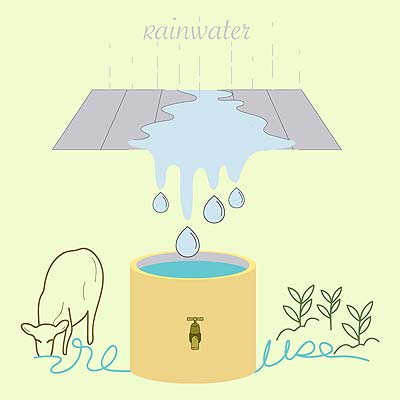
Before you start collecting rainwater, you will naturally want to know if this type of water is beneficial for your plants. The truth is that rainwater is not only beneficial but also recommended for your gardening. This is because this water contains no salts or minerals, and it is considered the purest type of water.
Since rainwater is so clean, it is one of the best hydration sources for your plants. It is ideal for indoor plants as well, and if you collect enough of it, you can use it to water your home plants with it for a long time.
![]()
Is rainwater good for vegetables?

Besides your flowers, you will definitely want to know if rainwater is recommended for your veggies as well. Several studies were made to determine if rainwater is safe to use on vegetables. Even if certain risks were present, the general outcome was a positive one.
The main concern when it comes to rainwater is collecting metal residue from house roofs and the barrels it is stored in. This could add to rainwater contamination, but as the study showed so far, risks are low. The metal residue identified in the collected rainwater came from zinc and copper. Still, the quantities found were irrelevant and not enough to harm the growth of the vegetable.
Another source of contamination for rainwater would be certain bacteria left by birds or other animals on the roof of the houses. This is why rainwater should not be stored in containers used for potable water.
Suggested Reading:

![]()
Do plants like rainwater?
Since rainwater is free of chemicals, salts, or other human-made ingredients, plants tend to love it as pure hydration. However, even too much of a good thing can be dangerous for plants, so make sure your flowers or veggies don't have more rainwater than they need.
![]()
Does rainwater have germs?
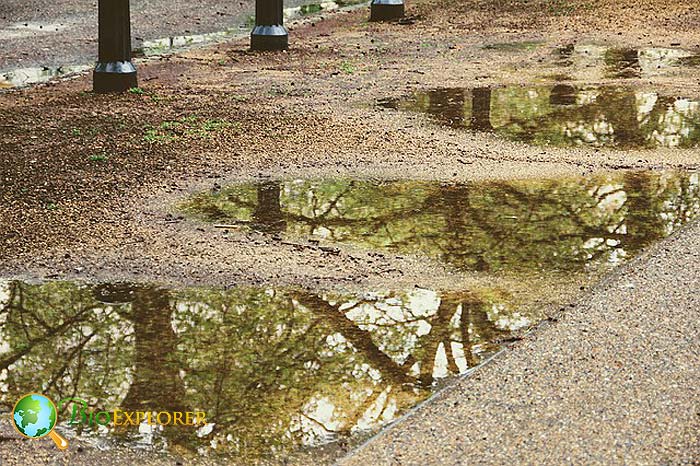
Even if the common perception is that rainwater is some of the cleanest types of water for plants, the truth is that even this water can contain different germs. For example, we mentioned the bacteria left by animals on the roof of the house, making its way into the rainwater barrels. But there is also another form bacteria can get in the rainwater.
The wind will collect the bacteria off the surface of the plants and ground and take it into the atmosphere, where it gets into the ice crystals and contaminate snow and rain. Then, every time it rains, the bacteria that resist the process can get back on the ground. On top of that, microbes can develop inside the clouds, so the purity of rainwater can't be complete.
![]()
What are the steps for harvesting rainwater for a garden?
As we mentioned, collecting rainwater doesn't have to be complicated at all. If you do it correctly and live in an area where it rains enough, you can even have free gardening water all year round.
A) Use a rainwater barrel
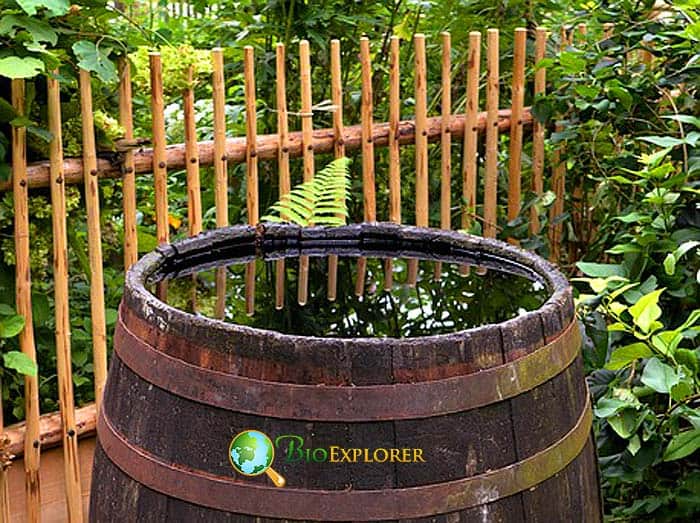
You might use a barrel that you already have, or you can make one for collecting rainwater. This method is the simplest one, and almost everyone can apply it right away. You can use a plastic barrel or a wood barrel, and if you don't have a barrel, you can also use buckets or other types of containers. Of course, your container should have a secure lid as well, so you don't get your rainwater contaminated during storage.
![]()
B) Place the barrel in the best spot
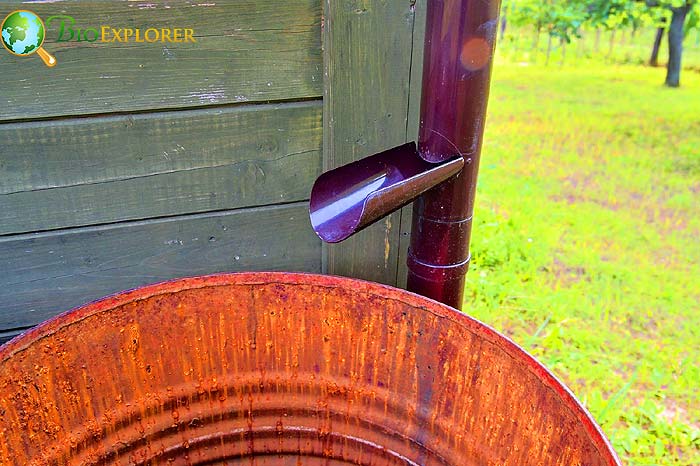
All you have to do is place your barrel or water container at the end of your house roof edge where the water jet is the thickest. If you have a barrel with a spigot, make sure the spigot is facing the garden. This will allow you to water your plants easier without struggling to take the water out of the barrel. It is recommended to set the barrel on a layer of bricks to be elevated enough from the surface to maneuver it properly.
![]()
C) Store your rainwater properly
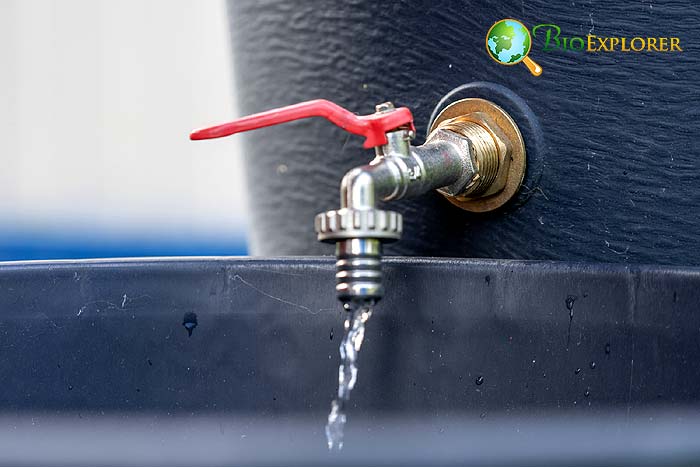
Speaking of storage, you will not have to create any special conditions for this. All you need to do is place the barrels or other water containers in a secure place and make sure no insects or bacteria can get inside them.
You can place a screen on top of the opening of your containers to keep mosquitoes from entering them as well. At the same time, if you are planning to store rainwater during the cold months of winter, make sure to only fill them up three quarters as the water might expand due to freezing conditions.
![]()
Do rainwater tanks need cleaning?
Rainwater tanks should be cleaned regularly to make the most out of your rainwater system. As you store rainwater in your tanks, it can become a magnet for impurities, and it can get contaminated relatively fast.
Cleaning your rainwater tank is not complicated, and it can keep your water in better condition. The following steps will work the same for all types of tanks regardless of their size and shape.
A) Drain the tank
Make sure your tank is empty when you start cleaning it. It is recommended to do this during summer days as it is easier and you will go through all the steps with less hassle. In addition, you can use the water you drain from your tank to water your garden, so you don't waste it. But as a helpful tip, you should consider cleaning your tank when the water level in it is pretty low, so you don't have to waste a lot of extra water.
![]()
B) Remove the debris
Cleaning the debris and dirt in your water tank is the most crucial step in this process. You will find that the dirtiest part is at the bottom of your tank. Here is where rotting leaves, bacteria, and debris can gather quickly.
If you use a screen on top of your tank, you might not have to clean as much debris since the screen will catch a vital part. There are professional cleaners on the market either way, and you can use brushes with long tails to reach all areas inside your rainwater tank.
When you got rid of all the debris, you will have to rinse the tank and get it ready for the next refill.
![]()
C) Set up your tank for the next rain
Now that your tank is clean, all you have left to do is connect it again to your rainwater collecting system. If you use an electric system, you can reconnect the power now too. Otherwise, simply cover your water tank with its seal, and you will be all set for the next rain.
![]()
Rainwater irrigation systems for garden
Watering your plants with rainwater can save you money and time as long as you set your irrigation system right.
The main reason why people choose this system is to water their plants directly with rainwater without manual intervention.
To implement such a system, you will need to add piping to the downspout, so the water gets directly to your veggies. You will also need a filtering system and a bit of landscaping to accommodate your watering system.
A) Set up your yard for a rainwater gardening system
The best way to implement this system is to design your garden and plant your flowers or veggies. If you plant them raw so that they form rectangular patches, you will find it easier to channel the rainwater to all your plants. Leave a clean area between the plant rows and create a rift.
The rift should be about 4 ft or 122 cm deep and long enough to reach all the roots of the nearby plants.
![]()
B) Add pipes to your downspouts
Once you create your rift, you have to add a piping system to your downspouts. The pipes you connect to the downspout should be long enough to reach the rift, so the rainwater fills it up and hydrates your plants every time. Ensure the water doesn't get directly on the plants but close enough to them to reach their roots.
Extra tip: At the end of the pipe, you attach to your downspout, you should consider adding a screen to retain residue and leaves that might make their way into the rainwater.
![]()
How to collect rainwater without gutters?
Most collecting rainwater methods include gutters, but what if you don't have these on your house? You can still collect rainwater even if you don't have gutters, and here is how to do that!
A) Use diverters
You can always use diverters to protect door frames and window frames but also to collect the rainwater. But keep in mind that diverters are not gutters. D diverters are usually made of resistant aluminum and come in different sizes. The roofs in a pyramid shape will naturally use gravity to direct water toward the ground. When you install them under the roof shingles, they will direct the water into a concentrated water jet that you will find easier to collect.
![]()
B) Place a barrel or a water tank under the water jet
Once you identified where rainwater falls in a more concentrated jet, thanks to the diverters you installed, all you have left to do is place a container under that area to collect the water. Using a barrel to collect water is a method used for centuries, and you can simply leave the barrel in your yard as it rains. Even if you don't put it under the edge of your roof, the barrel will still collect plenty of rainwater.
![]()
Other than gardening, what are other purposes of stored rainwater?
Besides using rainwater for irrigation purposes, you can also use it for different tasks around your home. For instance, you can use rainwater to wash your car or other objects in your yard and water the lawns. You can also use rainwater in composting processes if you create your own energy-pros-cons.html/">fertilizers at home.
If you invest in a water purifying system with proper tanks and filters, you can even convert rainwater into potable water. However, keep in mind that rainwater contains no minerals. Therefore, it might not offer your body as many benefits as groundwater.
![]()
Best way to recycle rainwater
When it comes to recycling rainwater, the best way to do that is to work for your yard and the equipment you have. For example, if your house has a roof with gutters, you will find it easy to use them to collect the water by installing a permanent tank under the downspout or under the most concentrated water jet area.
On the other hand, if your roof doesn't have gutters, you can use the barrel method as it allows you to move the barrel according to the area where the water pours more heavily.
![]()
Is it illegal to collect rainwater in some US states?
Rainwater can be collected freely in most US states. However, specific states have regulations regarding the ways people can collect rainwater.
| State | Restrictions | Legislation |
|---|---|---|
| Arkansas | The harvested rainwater can be used for any purpose except the potable one. It has to be harvested through a system designed by a local engineer and following Arkansas plumbing code. | The Arkansas Code Annotated Rainwater |
| Colorado | In Colorado, residents can collect up to 110 gallons of rainwater in two containers. Also, the water can be used only on the private property where it was collected. | House Bill 16-1005 |
| Georgia | Harvested rainwater can be used only for outdoor activities. | Department of Natural Resources in the Environmental Protection Division |
| Illinois | Collected rainwater can only be used for non-potable purposes, and it has to respect the Illinois plumbing code. | Illinois Plumbing Rainwater System |
| Nevada | In Nevada, residents need a water grant to collect rainwater. | NB74 |
| Texas | The system of collecting water needs to be incorporated into the house structure, and the local municipality has to be notified in writing. | Texas House Bill 3391 |
| Utah | Collecting rainwater is allowed as long as a person doesnt store more than 2500 gallons of it if they have a registration. Unregistered residents can store two containers of rainwater, with each having a capacity of a maximum of 100 gallons | Utah Senate Bill 32 |
![]()
What are the main problems of harvesting rainwater?
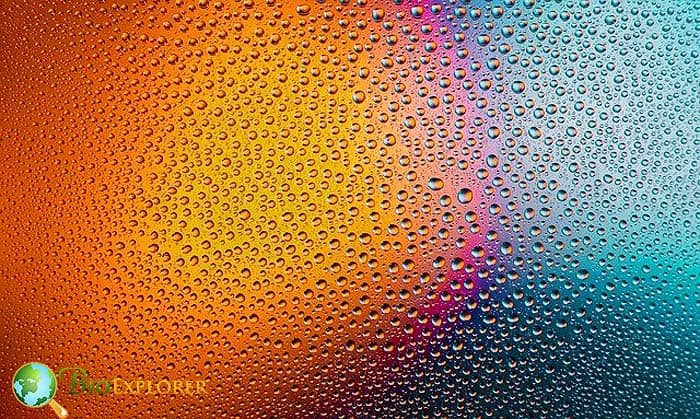
Even if collecting rainforest can bring several advantages to you as you can use it around your household, different problems could appear.
A) Rainwater can develop a particular smell
Rainwater can have an unpleasant smell if it is not stored correctly. Contaminated rainwater with debris inside of it can smell bad fast, and it becomes useless. This is why storing your water correctly is essential.
![]()
B) Rainwater might have a murky color
To begin with, rainwater is not as straightforward as potable water. Still, you will notice that sometimes it is murkier than usual. If your rainwater develops a yellowish or even brown or green shade, it might be because of algae growth. To avoid such a problem, you should make sure your water tank is cleaned and sealed correctly.
![]()
C) You collect less water than you expect
If you observe that you collect less water than before, chances are that it might be a blockage in your system. For example, one of the pipes you use might be clogged, or even the debris might restrict the downspout. Leaks could also lead you to collect rainwater, so checking your pipes frequently can help you stay on top of such situations.
![]()
Differences between stormwater and rainwater
Stormwater and rainwater are incredibly similar, but they are not to be confused. Stormwater includes the water that falls on the roof or on the ground. At the same time, rainwater is only the water that falls on the roof of the houses from where it can be collected into barrels, tanks, or other containers.
Stormwater is also different from rainwater. The moment rainwater gets in contact with the ground, it becomes contaminated with germs and bacteria from the ground.
![]()
Is rainwater soft or hard?
If you consider collecting rainwater, it is essential to understand its properties before you decide how you can use it.
Rainwater is the softest water you can find. Still, it is also naturally acidic due to the carbon dioxide gas present in the atmosphere. But even if rainwater is considered soft water, it still contains particles of impurities that it collects from the atmosphere as it falls.
![]()
Where to get large rain barrels?
If you need rainwater barrels, you can find them online on Amazon or at brick and mortar stores near you. In addition, they are available at stores that sell different home supplies as they are relatively common.
Keep in mind to look for barrels specifically labeled as rainwater barrels because they should be mode with this purpose in mind. In addition, you want such a barrel to be leakproof and come with a sealing system. Some rainwater barrels even come with useful accessories such as a filtration screen or a tap that allows you to access the water with no hassle.
![]()
Collecting rainwater is a practice with a history of several hundreds of years, and there is no reason to stop using this natural resource now. On the contrary, as long as you follow the regulations in your state, collecting rainwater can turn out to be an easy and accessible way to save money and reduce water waste at the same time.
![]()
Cite This Page
Key References
- "Can I Water Vegetables with my Rain Barrel Water? | Extension News". Accessed July 04, 2021. Link.
- "Manually Fix". Accessed July 04, 2021. Link.
How To Collect Rainwater For Garden
Source: https://www.bioexplorer.net/how-to-collect-rainwater-for-gardening.html/
Posted by: evanshiscia.blogspot.com

0 Response to "How To Collect Rainwater For Garden"
Post a Comment